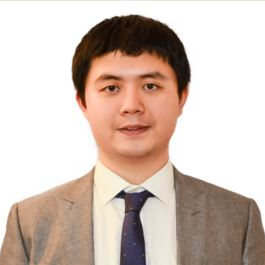Applications of Piezoelectric Devices and Materials
A special issue of Machines (ISSN 2075-1702). This special issue belongs to the section "Micro/Nano Electromechanical Systems (MEMS/NEMS)".
Deadline for manuscript submissions: 30 November 2024 | Viewed by 2903
Special Issue Editors
Interests: intelligent mechatronics; precision instrumentation; medical devices; nanotechnology; robotics
Special Issues, Collections and Topics in MDPI journals
Interests: MEMS; smart materials; micromechanics; machine learning-driven materials modeling
Special Issues, Collections and Topics in MDPI journals
Special Issue Information
Dear Colleagues,
Materials with piezoelectric effects can convert energy between mechanical and electrical domains. This can help to create novel devices for sensing, actuation and energy-harvesting applications. Piezoelectric materials have many attractive properties such as high voltage to strain ratio and high force per unit area. Additionally, are compatible with the cryogenic vacuum environment. These properties have made piezoelectric transducers useful in many precision machines for nano-positioning, strain sensing, vibration energy collection, etc. Conversely, care must be taken in engineering applications to deal with the inherent non-linearities of piezoelectric transducers including e.g. hysteresis, creep, charge leakage, varying capacitance. Significant research efforts have been devoted to creating phenomenological or lumped parameter system models to handle undesirable behaviors. To realize the full potential of piezoelectric devices, advanced model-based or data-driven techniques can be applied throughout the process of transducer design, application-specific integration and performance optimization.
This Special Issue aims to collect novel applications of piezoelectric materials in mechatronic systems and robotics, putting an emphasis on the practical aspects of modeling, fabrication, integration, driving, associated signal processing and control methods for performance improvement.
Dr. Fangzhou Xia
Dr. Stefano Mariani
Guest Editors
Manuscript Submission Information
Manuscripts should be submitted online at www.mdpi.com by registering and logging in to this website. Once you are registered, click here to go to the submission form. Manuscripts can be submitted until the deadline. All submissions that pass pre-check are peer-reviewed. Accepted papers will be published continuously in the journal (as soon as accepted) and will be listed together on the special issue website. Research articles, review articles as well as short communications are invited. For planned papers, a title and short abstract (about 100 words) can be sent to the Editorial Office for announcement on this website.
Submitted manuscripts should not have been published previously, nor be under consideration for publication elsewhere (except conference proceedings papers). All manuscripts are thoroughly refereed through a single-blind peer-review process. A guide for authors and other relevant information for submission of manuscripts is available on the Instructions for Authors page. Machines is an international peer-reviewed open access monthly journal published by MDPI.
Please visit the Instructions for Authors page before submitting a manuscript. The Article Processing Charge (APC) for publication in this open access journal is 2400 CHF (Swiss Francs). Submitted papers should be well formatted and use good English. Authors may use MDPI's English editing service prior to publication or during author revisions.
Keywords
- piezoelectric materials
- transducers
- nano-positioning
- motion control
- sensing
- energy harvasting
- non-linearity modeling
- precision engineering
- mechatronic systems
- power electronics






